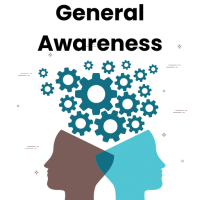SSC CGL Exam > SSC CGL Questions > Which sentence includes an example of a linki...
Start Learning for Free
Which sentence includes an example of a linking verb?
- a)She smells the flowers in the garden.
- b)The weather seems pleasant today.
- c)They danced all night long.
- d)He writes stories for children.
Correct answer is option 'B'. Can you explain this answer?
Verified Answer
Which sentence includes an example of a linking verb?a)She smells the ...
Linking verbs connect the subject of a sentence to a subject complement or an adjective that describes or renames the subject. In Option B ("The weather seems pleasant today"), "seems" is a linking verb as it connects the subject "weather" to the subject complement "pleasant."
Additional Fact: Common linking verbs include "be" verbs (is, am, are, was, were, etc.) and other verbs like "seem," "appear," "become," and "feel."
View all questions of this test
Additional Fact: Common linking verbs include "be" verbs (is, am, are, was, were, etc.) and other verbs like "seem," "appear," "become," and "feel."
Most Upvoted Answer
Which sentence includes an example of a linking verb?a)She smells the ...
Understanding Linking Verbs
Linking verbs are essential components of English grammar that connect the subject of a sentence to additional information about the subject. Unlike action verbs, linking verbs do not express an action but instead serve as a bridge to describe the subject's state or condition.
Identifying the Correct Sentence
In the provided options, the correct answer is:
- b) The weather seems pleasant today.
This sentence contains the linking verb "seems," which connects the subject "the weather" to the adjective "pleasant," describing its condition.
Examples of Other Options
To clarify why the other options do not contain linking verbs:
- a) She smells the flowers in the garden.
- Here, "smells" is an action verb because it describes the action of perceiving a scent.
- c) They danced all night long.
- "Danced" is also an action verb, indicating the physical activity taking place.
- d) He writes stories for children.
- In this case, "writes" is an action verb that describes the act of composing stories.
Key Characteristics of Linking Verbs
- Common Linking Verbs: Examples include "is," "are," "was," "were," "seems," "becomes," and "appears."
- Function: They connect the subject to a subject complement, which can be an adjective, noun, or pronoun that provides more information about the subject.
By recognizing linking verbs, one can better understand sentence structure and enhance communication clarity.
Linking verbs are essential components of English grammar that connect the subject of a sentence to additional information about the subject. Unlike action verbs, linking verbs do not express an action but instead serve as a bridge to describe the subject's state or condition.
Identifying the Correct Sentence
In the provided options, the correct answer is:
- b) The weather seems pleasant today.
This sentence contains the linking verb "seems," which connects the subject "the weather" to the adjective "pleasant," describing its condition.
Examples of Other Options
To clarify why the other options do not contain linking verbs:
- a) She smells the flowers in the garden.
- Here, "smells" is an action verb because it describes the action of perceiving a scent.
- c) They danced all night long.
- "Danced" is also an action verb, indicating the physical activity taking place.
- d) He writes stories for children.
- In this case, "writes" is an action verb that describes the act of composing stories.
Key Characteristics of Linking Verbs
- Common Linking Verbs: Examples include "is," "are," "was," "were," "seems," "becomes," and "appears."
- Function: They connect the subject to a subject complement, which can be an adjective, noun, or pronoun that provides more information about the subject.
By recognizing linking verbs, one can better understand sentence structure and enhance communication clarity.

|
Explore Courses for SSC CGL exam
|

|
Question Description
Which sentence includes an example of a linking verb?a)She smells the flowers in the garden.b)The weather seems pleasant today.c)They danced all night long.d)He writes stories for children.Correct answer is option 'B'. Can you explain this answer? for SSC CGL 2025 is part of SSC CGL preparation. The Question and answers have been prepared according to the SSC CGL exam syllabus. Information about Which sentence includes an example of a linking verb?a)She smells the flowers in the garden.b)The weather seems pleasant today.c)They danced all night long.d)He writes stories for children.Correct answer is option 'B'. Can you explain this answer? covers all topics & solutions for SSC CGL 2025 Exam. Find important definitions, questions, meanings, examples, exercises and tests below for Which sentence includes an example of a linking verb?a)She smells the flowers in the garden.b)The weather seems pleasant today.c)They danced all night long.d)He writes stories for children.Correct answer is option 'B'. Can you explain this answer?.
Which sentence includes an example of a linking verb?a)She smells the flowers in the garden.b)The weather seems pleasant today.c)They danced all night long.d)He writes stories for children.Correct answer is option 'B'. Can you explain this answer? for SSC CGL 2025 is part of SSC CGL preparation. The Question and answers have been prepared according to the SSC CGL exam syllabus. Information about Which sentence includes an example of a linking verb?a)She smells the flowers in the garden.b)The weather seems pleasant today.c)They danced all night long.d)He writes stories for children.Correct answer is option 'B'. Can you explain this answer? covers all topics & solutions for SSC CGL 2025 Exam. Find important definitions, questions, meanings, examples, exercises and tests below for Which sentence includes an example of a linking verb?a)She smells the flowers in the garden.b)The weather seems pleasant today.c)They danced all night long.d)He writes stories for children.Correct answer is option 'B'. Can you explain this answer?.
Solutions for Which sentence includes an example of a linking verb?a)She smells the flowers in the garden.b)The weather seems pleasant today.c)They danced all night long.d)He writes stories for children.Correct answer is option 'B'. Can you explain this answer? in English & in Hindi are available as part of our courses for SSC CGL.
Download more important topics, notes, lectures and mock test series for SSC CGL Exam by signing up for free.
Here you can find the meaning of Which sentence includes an example of a linking verb?a)She smells the flowers in the garden.b)The weather seems pleasant today.c)They danced all night long.d)He writes stories for children.Correct answer is option 'B'. Can you explain this answer? defined & explained in the simplest way possible. Besides giving the explanation of
Which sentence includes an example of a linking verb?a)She smells the flowers in the garden.b)The weather seems pleasant today.c)They danced all night long.d)He writes stories for children.Correct answer is option 'B'. Can you explain this answer?, a detailed solution for Which sentence includes an example of a linking verb?a)She smells the flowers in the garden.b)The weather seems pleasant today.c)They danced all night long.d)He writes stories for children.Correct answer is option 'B'. Can you explain this answer? has been provided alongside types of Which sentence includes an example of a linking verb?a)She smells the flowers in the garden.b)The weather seems pleasant today.c)They danced all night long.d)He writes stories for children.Correct answer is option 'B'. Can you explain this answer? theory, EduRev gives you an
ample number of questions to practice Which sentence includes an example of a linking verb?a)She smells the flowers in the garden.b)The weather seems pleasant today.c)They danced all night long.d)He writes stories for children.Correct answer is option 'B'. Can you explain this answer? tests, examples and also practice SSC CGL tests.

|
Explore Courses for SSC CGL exam
|

|
Signup for Free!
Signup to see your scores go up within 7 days! Learn & Practice with 1000+ FREE Notes, Videos & Tests.


















